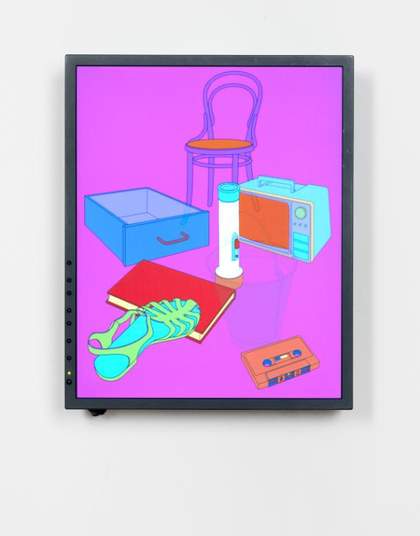The Pericles research project addresses the challenges of ensuring that digital content remains accessible and understandable. It takes as its subject matter the unusual, possibly unique, combination of art, media and scientific data and digital objects. The project draws on use cases from Tate and the Belgium Space Operations Centre. Tate’s contribution focuses on the challenge of preserving digital art and born digital archives from Tate’s collections as well as material created by Tate’s in-house media production team, Tate Media. By collaborating with research practitioners and experts in different areas of digital preservation, software and computer engineering the project aims to consider the impact of change on different types of digital object, taking into consideration the impact of the specific contexts of these digital objects.
Tate also leads dissemination activities for the project as well as being responsible for organising a key element of the ongoing project evaluation.
Pericles: An overview by Mark Hedges, King’s College London, project leader

Michael Craig-Martin Becoming 2003
© Michael Craig-Martin
This project is driven by a number of observations. Firstly, as digital content and its associated metadata are generated and used across different phases of the information lifecycle, the concept of a fixed and stable ‘final’ version that needs to be archived and preserved becomes less appropriate. Instead, interrelated information is generated as a continuum within a continually changing environment.
Secondly, long-term sustainability requires us to address change more broadly. As well as technological developments, this includes changes in semantics (such as ‘semantic drift’ in language), or disciplinary, social and policy changes that affect the knowledge, practices, and interests of stakeholder communities.
Finally, ensuring that these stakeholder communities can continue to access and understand content in such a changing environment requires information about that environment, not just about the digital objects being preserved, to be captured, managed and interpreted. In particular, this includes the network of dependencies between digital resources.
In Pericles we are addressing these challenges with a ‘preservation by design’ approach, in which we mitigate the risk from diverse forms of change by capturing a wide range of significant information about a digital object and its environment (at multiple stages in its lifecycle). This information is then organised in a way that allows change to be monitored, managed, and responded to as the environment evolves. We will achieve this through a number of interwoven research threads.
We are developing models (together with associated tools) that can be used to describe the environment in which digital objects are created, managed and used, and to represent the various interrelated resources that these environments contain. These include metadata about a digital object, its dependencies on other objects, processes that an object undergoes, policies to which it is subject, systems used to render it, and user communities that access it. We have produced both a conceptual model for the entities and interactions that can influence the ongoing usefulness of a digital object, and a formal modelling language based on RDF for describing dependencies and other relationships within this model.
A complementary research thread involves investigating analytical techniques for capturing and extracting preservation-related information from digital content and its environment. These can include, for example, semantic information extracted from text or video, dependencies between digital objects, or forensic information from storage devices. We have in particular developed a tool for capturing live environment information from a running computer system. In various forms, these approaches provide information that can be used to populate specific instances of the models.
The third complementary thread will address mechanisms for understanding the impact on a digital object of various forms of change within the environment, and for handling and adapting to this change when it occurs. These mechanisms are driven by the models that represent the environment and the dependencies within it, combined with formalised means of representing and enforcing policies (e.g. by executing a software process) that govern how the environment responds to change.
The project will be working with digital content and stakeholders from two quite different domains: on the one hand, digital artworks, such as software-based installations and digital video art, and other digital media from Tate’s collections and archives; on the other hand, scientific and operational data originating from the European Space Agency and International Space Station.
These case studies are not simply sources of requirements for software development, but perform several complementary roles within the project. In addition to being statements of needs or wants on the part of the user communities, some of which may be satisfied by the project outputs, they also provide contexts for validating – and nuancing – the models, methods and tools, and concrete domains within which the key themes of the project can be explored in concrete terms.
The project is developing two test-beds, one for each of these two application domains, which will enable software tools, but also models and ideas more broadly, to be evaluated in concrete scenarios that are meaningful to stakeholder communities.
Project partners
- King’s College London
- University of Borås
- Information Technologies Institute
- Dotsoft SA
- Georg-August-Universität Göttingen
- The University of Liverpool
- Space Applications Services NV
- Xerox SAS
- The University of Edinburgh
- Tate
- Belgian User Support and Operations Centre
